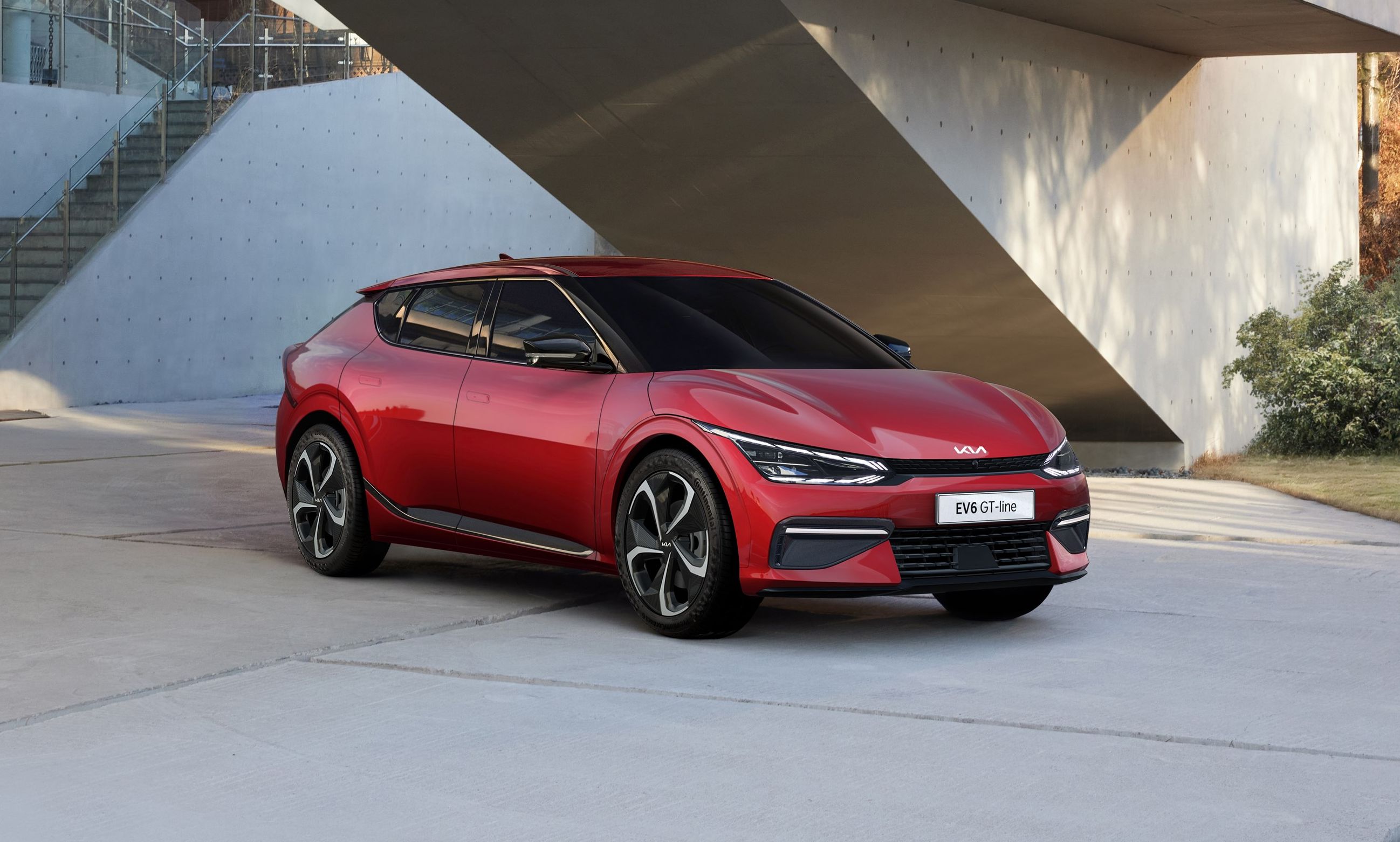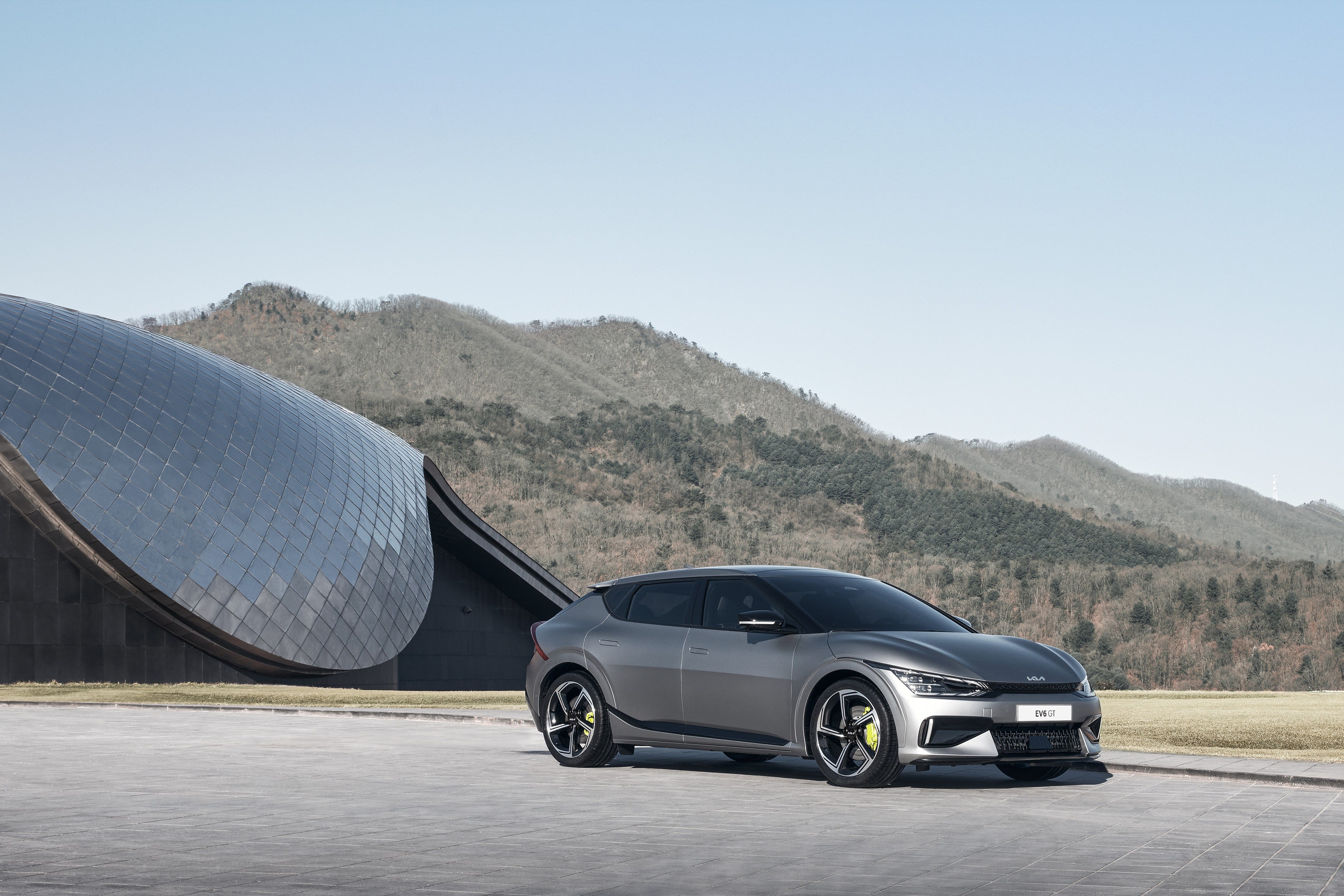Electrification is the way to go whether you like it or not. Enough and more has been said about the advent of EVs, so we won't get into that. Every automaker is coming up with their own new offerings, but there are some that stand out. The Kia EV6 is that stand-out model. Built from the ground up, the EV6 doesn’t seem like a half-hearted attempt from the automaker just because it needs to have a presence in the EV market. It is based on a new platform, a new design philosophy, and excels in most of the departments. It isn’t a perfect product, obviously, but it has a lot going in its favor and that’s precisely why it should be the talk of the town and why Porsche should be a little worried.
What’s The Kia EV6 All About?
The Kia EV6 will rival the Mustang Mach-E primarily. However, the product has enough potential to take on even cars from a segment or two above. Before we pit the South Korean against the other EVs, here are its highlights in a nutshell:
-* Underpinned on a new BEV-dedicated Electric-Global Modular Platform
-* Based on Kia’s new design philosophy called ‘Opposites United’
-* Two battery packs on offer - Standard Range 58 kWh pack and a Long-Range 77.4 kWh pack
-* Supports 800V and 400V charging capabilities without the need for any extra adapters or components
-* It will be offered in three different trims – EV6, GT Line, and GT
-* It makes 577 ponies and 546 pound-feet of torque in the top trim
-* 0-62 mph in 3.5 seconds
-* It can recuperate from 10- to 80-percent in 18 minutes flat
-* Add up to 62 miles of range in 4.5 minutes in certain combinations
-* 316 miles of range as per the WLTP cycle in its best avatar
-* Vehicle-to-load function with power supply up to 3.6 kW
-* Comes with a heat pump
-* Towing capacity rated at 3,527 pounds
-* Two 12-inch screens that come with a variety of functions
-* On sale from the second-half of 2021 in select markets
-* Expected to start around $42,000 and top out at $55,00, before federal tax credits
How Does The EV6 Fare Against The Porsche Taycan?
The Taycan caters to a different crowd altogether and pitting a Porsche against a Kia makes no sense. But, the EV6 is such a competent product that we can’t help but draw comparisons. The base Taycan starts at $80,000 and features a motor that churns out 322 horses, unless you opt for the options.
The range is limited to 200 miles, which is also what the worst figures that EV6 could offer as per the EPA-estimated cycle. The 0-60 mph time here is rated at 5.1 seconds and top speed at 143 mph. The EV6, in its best avatar, will take probably 3.4 seconds to 60 mph and will have a top speed of 162 mph. And the price? We estimate it to be under $55,000.
Let me reiterate: The Kia EV6 is no threat to the Porsche Taycan and no potential customer in the market for either of the products will cross-shop. But this comparison shows why the EV6’s primary rivals should fear the Korean product.
Kia EV6 vs. The Ford Mustang Mach-E and The Tesla Model Y
The EV6 will square up against the Mustang Mach-E mainly and folks looking to shop in this segment will have both these cars along with the Model Y on their list. Here’s how it goes up against both these vehicles.
Ford Mustang Mach-E
The Mach-E is a significant product for Ford’s future. It is what the EV6 is to Kia. Being its first electric vehicle, Ford decided to bet everything it had on it to make sure it is well received. One such move was to slap it with the Mustang moniker, which received polarizing opinions. This also meant the Mach-E is the first Mustang SUV ever.
Ford offers the Mach-E in many trims, which is the automaker’s norm with all its products, but let’s see how it compares with the EV6 in its top GT and GT Performance editions. The company recently opened the orders for them and they are priced at $61,000 and $66,000, respectively. According to our guesstimates, the GT might be a few thousand bucks extra over the EV6, but the GT Performance Edition is far away.
Both come with a dual-motor setup and an all-wheel-drive setup.
They will be offered only with the larger 88 kWh battery pack and not the other 66 kWh pack option that Ford offers on other trims. Despite this, the targeted EPA-estimated range is 250- and 235 miles on the GT and the GT Performance Edition. We don’t have the EV6’s figures for the performance-spec model yet, but we’ve estimated a similar range, perhaps a little lower, but above 200 miles. It will be interesting if Kia would be willing to offer a bigger pack for a few thousand bucks to take on these twins. To refresh your memory, Kia EV6’s largest battery pack is 77.4 kWh, almost 10 kWh smaller than the Mustang Mach-E’s.
Tesla Model Y
The Model Y is the crossover-equivalent of the Model 3 to some extent. Tesla offers it in two trims, Long Range and Performance. They are priced at $51,000 and $61,000, but aren’t eligible for any federal tax credits, unless the new GREEN Act comes into play. The EPA-estimated range is 326 miles and 303 miles for the two trims.
In terms of performance, they run on the same lines.
Tesla is not known for its build quality and that is a deal-breaker for a lot of folks. Also, the EV6 comes with vehicle-to-load technology, which essentially turns the car into a generator for appliances, but the Model Y doesn’t offer any such function. Tesla doesn’t even allow it, which an owner learned the hard way during the Texas winter storm a couple of months back. Under the “exclusions and limitations” section in the owner’s manual, the automaker has clearly mentioned that using the vehicle as a stationary power source will void the warranty. Things like these make the EV6 a compelling rival and a serious threat to the Model Y.
Honorary Comparison: Tesla Model 3
It doesn’t make much sense to square it up against the Model 3, but the latter has obliterated the competition beyond recognition so far. The EV6 needs to be pitted against this car even though the Model 3 holds the edge. In terms of pricing, we would put the most powerful Kia model against the Long Range Plus which starts at $48,000. The EV6 top trim should be in this ballpark when you account for the $7,500 federal tax credit. The Model 3 Long Range comes with a dual-motor setup and takes 4.2 seconds to 60 mph, which is slower than the EV6’s best time of 3.4 seconds to 60 mph. The top speed of this Model 3 trim is 145 mph as opposed to EV6’s 162 mph.
The Kia EV6 comes with a longer wheelbase, is wider, and taller, too. Kia hasn’t disclosed the EV’s interior dimensions, so we’re using this as the benchmark. It will be on par with the Model 3, if not more spacious. The EV6 also offers more cargo space, 18.4 cubic feet versus Tesla’s 15 cubic feet. The EV6 comes with a heat pump and Tesla has introduced it as part of the 2021 refresh, which puts them on the same page in this regard.
The biggest point where Tesla beats the Kia EV6 is the range. The EV6 offers 316 miles of range according to the WLTP cycle in its best form, which won’t be the range in the fastest EV6. So, we’re perhaps looking at around 230 miles as per the EPA-estimated range. The Tesla Model 3 in the said trim delivers 353 miles on a full charge!


